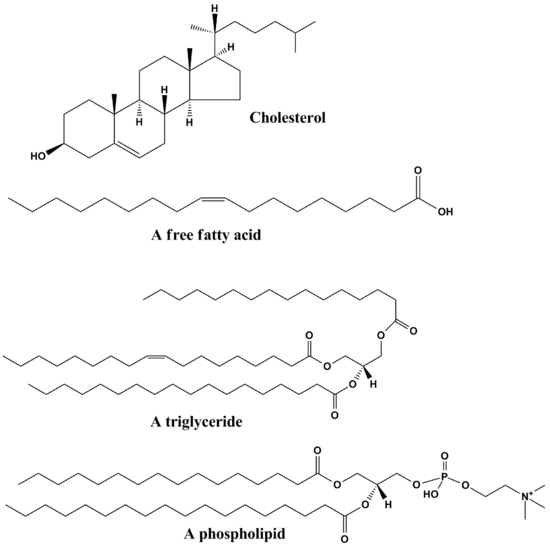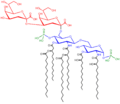Lipid facts for kids
A lipid is a type of organic molecule found in living things. It is oily or waxy. Fats are made from lipid molecules. Sources of lipid can be found in algae, seeds, meat, cheese, butter and fish. Lipids are long chains of carbon and hydrogen molecules. Lipids are classified as simple and complex. Examples of complex molecules could be steroids or phospholipids.
A very important biological function of lipids is as lipid bilayers, the basis of many cell membranes. Another function of lipids is to serve as an energy reserve. Lipids can be hydrophobic (non-polar), or amphipatic (containing both polar and non-polar parts).

Lipids are a group of naturally occurring molecules that include fats, waxes, sterols, fat-soluble vitamins (such as vitamins A, D, E, and K), glycerides, phospholipids, and others. The main biological functions of lipids include storing energy, signalling, and acting as components of cell membranes.
Images for kids
-
Example of an unsaturated fat triglyceride (C55H98O6). Left part: glycerol; right part, from top to bottom: palmitic acid, oleic acid, alpha-linolenic acid.
-
Structure of the saccharolipid Kdo2-lipid A. Glucosamine residues in blue, Kdo residues in red, acyl chains in black and phosphate groups in green.
See also
 In Spanish: Lípido para niños
In Spanish: Lípido para niños




